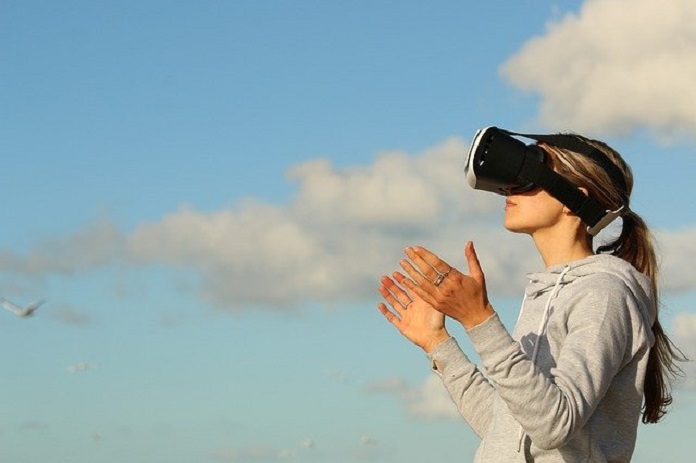Find out about some of the new ways virtual (augmented reality) is being used in research and medicine.
Assistive technology for low vision
Retinitis pigmentosa is an eye condition that reduces vision. When severe, the condition can lead to poor peripheral vision resulting in an inability to interpret relative distance. Impaired vision can lower quality of life and cause difficulty in accomplishing daily tasks. In most cases, successful navigation is achieved through an aid, usually a cane or a seeing eye dog. Virtual reality vision aids have been tested previously but have been difficult to commercialize due to poor user friendliness and blocked residual vision. A study published in Nature presented augmented reality glasses and tested their function as a form of assistive technology for low vision.
The device, labeled a Microsoft Hololens, was coupled with the Microsoft Mixed Reality Toolkit (MMRT) for testing. The device performed as a low vision aid for patients of retinitis pigmentosa. Ten patients were provided the device for assistance with mobility and avoiding obstacles. The augmented reality glasses enhanced vision by projecting bright colours, that corresponded to the obstacles, onto the retina of the eye. The patients were recorded as they navigated through the obstacles. The researchers recorded collisions and the time it took for participants to complete the course.
According to the study, patients expressed improved vision using the augmented reality glasses. Mobility was increased by 50% and grasping of nearby objects was improved by 70%. The augmented reality glasses did not significantly impact on the time taken to complete the course. Patients with retinitis pigmentosa have difficulty with vision, particularly in darkness. The device successfully improved vision in low light in the tested patients.
According to the researchers, the augmented reality glasses require further testing to resolve technical issues but may be commercially implemented in the near future. This study claims to be the first to showcase vision improvement in retinitis pigmentosa patients using an augmented reality aid in a Food and Drug Administration validated experiment.
Written by Shrishti Ahuja, BSc
Virtual reality to combat loneliness
The physiological consequences of aging negatively affect our speed, accuracy, strength, stability, and coordination. The extent to which this occurs, why it varies between individuals, and exactly what parts of the brain or body change are not well known. In both motor and cognitive tasks, older adults become increasingly worse off than younger individuals. It is thought that this decline limits their social interactions, which can result in feelings of loneliness.
In today’s increasingly technology based, fast-changing social environment, this loneliness is more pronounced than ever before. Elderly people today hardly grew up with television and technology has advanced at an extremely fast pace over their lifetime, so it’s no wonder they’re reluctant to engage in new methods of digital communication.
Encouraging and welcoming an aging population to participate in modern technology is critical for reducing loneliness. Researchers have caught onto this, and have already found that teaching computer classes to the elderly decreases loneliness and has a positive impact on mental well-being. These classes focus on engaging online, and with evolving technologies, the exclusion of older adults due to physiological limitations may be avoided entirely.
Antunes and colleagues intend to investigate the added benefit of virtual reality to elderly students in computer classes. This is an accessible, augmented reality, that could give older adults an amazing escape from the natural deterioration of their physical state. Another benefit is the understanding of aging-related changes we will gain through their varied game offerings. Virtual reality is progressing at an impressive rate, and has the potential to allow anyone to experience just about anything.
The role that virtual reality could play is an exciting avenue to help slow aging and eliminate loneliness. This will be an important area to improve the lives of aging populations, and could alleviate some of the anticipated burdens of aging on the health care system.
Written by: Soleil Grisé, HBSc
References:
Angelopoulos, A.N., Ameri, H., Mitra, D. et al. Enhanced Depth Navigation Through Augmented Reality Depth Mapping in Patients with Low Vision. Sci Rep 9, 11230 (2019) doi:10.1038/s41598-019-47397-w
Keckmedusc. (n.d.). Augmented reality glasses may help people with low vision better navigate their environment. Retrieved from https://www.eurekalert.org/pub_releases/2019-08/uosc-arg082219.php.
Image by Pexels from Pixabay



